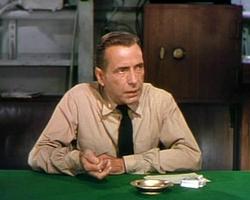
A new school year has begun so let’s see what’s going on in the world of teaching local history. These examples come from a local school district, a regional NPS history organization, a public college, and Cornell. Together they provide an unscientific overview of the situation today.
Niagara Falls City School District
I received the following notice from a social studies teacher in the Niagara Falls City School District
We are looking for Districts or Agencies across the State that might have information to share about programs that offer field trips/experiential learning to connect their students with Local History.
It is our goal to create a sustainable (funded) series of experiences that would increase awareness and ultimately, develop students’ desire to promote and preserve the rich heritage of Niagara Falls and Western New York.
We are aware that the NYS Parks offer transportation grants, but are open to any other ideas or suggestions for structure, programming, or sustainability. It will be interesting to see what others are doing, so we can tailor our own program to meet our situation and needs.
I can be reached directly via email at afortin-nossavage@nfschools.net or via the contact information below, rather than overload the listserv.
Thanks in advance for your time and consideration.
Andrea
Andrea Fortin-Nossavage
Niagara Falls City School District
Teacher, Social Studies
2016 Empire State Excellence in Teaching Awardee
Member, NYS Professional Standards and Practices Board
Advisor, NFHS Local History Club
716-278-5800 Ext. 41426
Several thoughts immediately come to mind. Is Niagara the only area with a rich heritage an which supports experiential learning? What is going on around the state? Is there any central repository for information about what the school districts are doing with field trips? Should there be?
The request raises serious questions about the role of civics in our education system, our connecting students to the communities in which they live, on developing a sense of place, a sense of belonging, and on strengthening the social fabric that holds us together. It would be beneficial to know what the situation is statewide and if we are failing America’s future by denying the country’s the young the opportunity to engage their local communities through critical thinking and experiences.
Teaching Hudson Valley: Writing About Place 2016

One of the ways students can engage their local communities and develop critical thinking skills is through writing their village, town, or city. Teaching Hudson Valley, the National Park Service program based at the FDR home and library, is designed to promote connections by students to places in the Hudson Valley. I just received the following announcement from the program.
Each year THV asks students to tell us about places in the Hudson Valley that have special meaning for them. (Writing from previous years.) Adults: please review the guidelines below, the prompts, and the submission form before discussing the contest with students. At the bottom of this page and the prompt page are additional resources to help you and your students make the most of this opportunity.
Who is eligible?
Any student, grades K-12, living and/or attending school in the 11-county Hudson River Valley National Heritage Area may participate.
This map delineates the area; students may write about places in the region that are not shown on the map as long as they are open to the public and not commercial establishments.
Guidelines
All students should:
- Write about places they actually know.
- Use a THV prompt. (MS and HS students: indicate the prompt selected.)
- Choose public, non-commercial places they want to share with classmates.
- Give all writing a title.
- Proofread carefully.
- Take risks in describing places and their connections to them.
- Submit only work completed during the summer or fall of 2016.
Word limits: Grades K-4, up to 250 words; 5-8 up to 1,000 words; grades 9-12, up to 1,500 words.
Optional: students may submit one photo, drawing, collage, or other graphic clearly related to his/her writing. No student will lose points for submitting only written work.
Review process
Teachers, site staff, THV’s coordinator, and representatives of the NYS DEC’s Hudson River Estuary Program, and the Hudson River Valley Institute at Marist College, will read and comment on student work. Readers will look for evocation of place, a vivacious voice, and use of conventions appropriate to each student’s age and development. A new rubric will be available here soon.
Prizes
All entries are eligible for publication on THV’s blog. We may share student work with staff or volunteers at the place written about and will look for additional publishing opportunities. Submissions about places with cultural, historic, or natural significance, owned or managed by a not-for-profit or government body, and regularly open to the public are eligible for prizes.
The classes of students who place first (one each from grades K-4, 5-8, and 9-12) will receive up to $900 to help cover the cost of visiting places written about. Please encourage students to choose a place they would enjoy sharing with their classmates as we are unlikely to approve an alternate site. Family members, please confirm with the student’s teacher that this prize will be welcome. Additional prizes TBA.
Questions? E-mail Info@TeachingtheHudsonValley.org or phone Debi Duke, 845-229-9116, ext. 2035.
Doesn’t this program seem like something which should exist in other valleys as well? How about statewide? Isn’t this something every school district could do as part of its own curriculum without needing the NPS to show them the way?
SUNY Adirondack Course: History of Warren and Washington Counties

Of course for an effective k-12 class in local history, the teachers need to be knowledgeable in the subject. That means there needs to be programs tailored to the history of local areas and which include visits to the historic sites of the region. New York History Blog had a post precisely on this topic on September 13, 2016 focused on two particular counties.
SUNY Adirondack in Queensbury is offering a credit course in the history of Warren and Washington counties for the 2016 Fall semester.
The course spans from Native American occupation and the Colonial Wars, to the establishment of communities by Europeans and African-Americans, finally covering the homefront of the World Wars, the suburbanization, and the rise of tourism.
The course will be led by Edward Knoblauch, MA, who was one of the managing editors of The Encyclopedia of New York State and the editor of the Papers of Sir William Johnson digital edition.
HIS 270 History of Warren and Washington County will be held Tuesday evenings from 6:30-9:30, from September 13 to December 20. Students will receive three credit hours. For more information on SUNY Adirondack, or to register, click here or call Admissions at (518) 743-2264.
Shouldn’t every SUNY and CUNY offer such a class for its own region? Should such classes be required for teacher certification as an elementary school teacher or social studies teacher? Shouldn’t teachers who relocate to a new area be required to immerse themselves in the history of their new location by taking such a class for college credit or as professional development?
Teaching Cornell History

In fact, Corey Ryan Earle, a visiting lecturer in the American-studies program at Cornell University and associate director of student programs in the Office of Alumni Affairs, has been teaching a class at Cornell on local history, the history of the college itself. He has been doing so for six years and reports:
Topics include Cornell’s founders and founding, student life, diversity and inclusion, unrest and activism, and finances and administration. Having observed more than 2,000 students in my classroom, I am a firm believer that one of the best investments a college can make is in teaching its own history.
His thinking resembles that provided from the benefits of teaching local history at the k-12 level adjusted for the college environment.
For starters, a large course with broad appeal across disciplines offers students a unifying experience, creating a sense of community that colleges strive to build. It brings together engineers and athletes, pre-meds and humanists, first-generation students and fourth-generation legacies — students across fields of study and backgrounds, many of whom have never taken a course together. Especially at a large, decentralized university like Cornell, shared experiences are rare and difficult to create. An institution’s own history is a topic that can, and should, resonate with everyone. Students draw parallels with those of the past and are surprised by ways the undergraduate experience and the campus have changed.
As you read the following paragraph about the benefits of such a class for school pride, mentally substitute the name of your municipality for the college and see if the advantages aren’t the same.
Teaching a college’s history is also an opportunity to instill school pride. Every institution has its own identity and traditions. Students should graduate knowing what makes their alma mater special. Whether it’s a victory on the football field or — of far greater consequence — courageous student activists fighting for civil rights, every college has history worth celebrating. Proud students become proud alumni, who will happily contribute their time, talent, and treasure when called upon to do so.
As with the college, so with the local municipality.
Now replace the word “alum” in the following paragraph with the word “taxpayer” and ask yourself why colleges work harder at knitting the social fabric than do your municipalities.
Institutional pride and a sense of community are key ingredients for alumni’s long-term engagement with their alma mater. In the face of financial challenges, many colleges have focused on encouraging undergraduates to be “future alumni.” From orientation to graduation, they are bombarded with messages from alumni associations and class-gift campaigns in hopes that they will understand how much their alma mater will depend upon their support (financially and otherwise) after commencement. Many such programs emphasize history and traditions based on the assumption that those who take pride in their institution are more inclined to stay engaged and support it.
Earle optimistically concludes:
These courses can create a cohort of knowledgeable ambassadors who take pride in their alma mater, share that enthusiasm with those around them, and remain engaged after graduation. With all of the resources that colleges direct toward doing exactly that, offering a course on your institution’s history should be an easy decision.
It should be an easy decision. It should be an easy decision at the college level. It should be an easy decision at the k-12 level. It should be an easy decision in life. Imagine a family get-together on Thanksgiving with no stories to tell. Imagine a school reunion with no stories to tell. Imagine Paleolithic people gathered around the campfire with no stories to tell. Imagine children growing up isolated in time limited to the present and bound by the tweet. We are a storytelling species and without the experience of shared stories the social fabric is ripped asunder and what is left is too horrible to imagine. Be it ever so humble there is no place like home so let’s start with the stories of our community home.





